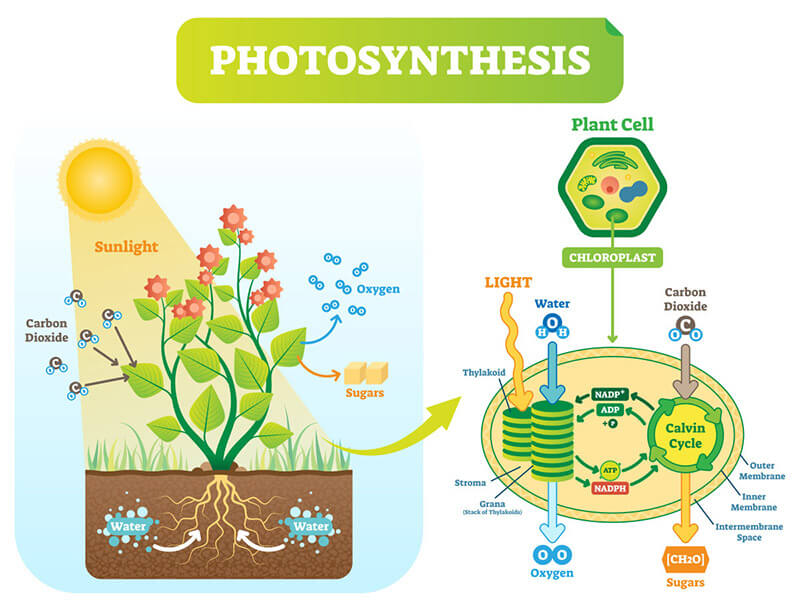Land plants are confronted with a variety of abiotic and biotic stresses, which can trigger a series of changes of cell processes. Photosynthesis can transform water, carbon dioxide, and minerals into oxygen and sugar using energy from the sun, providing organic compounds and energy for their own growth (Figure 1). The photosynthesis efficiency will be damaged under adverse environmental conditions. The functionality of the photosynthetic systems can be evaluated based on chlorophyll fluorescence emitted from plant leaves. The photosynthetic efficiency of photosystem II will decrease under environmental stresses. In addition, the membrane permeability will increase under thermal stresses, leading to high leakage of electrolyte. The levels of electrolyte leakage can be evaluated by measuring changes in electrolyte conductivity of infiltration fluids of leaves.
 Figure 1. The process of photosynthesis.
Figure 1. The process of photosynthesis.
With years of experience in plant physiological studies, Lifeasible offers accurate and fast leaf photosynthesis efficiency and electroconductivity analysis. We are devoted to providing the best services for our customers worldwide.
Photosynthesis efficiency analysis
The photosynthetic efficiency of photosystem II, under light (ΔF/Fm’) or in the dark-adapted state (Fv/Fm) can give an insight into the performance of the photosynthetic systems under stress conditions. The electron transport rate (ETR) is another light-adapted parameter to evaluate the degree of plant stress. The formulation to calculate ETR value is ETR =ΔF/Fm’ × PAR × 0.84 × 0.5, where PAR represents the irradiation light level in the PAR range (400 nm to 700 nm) in μmols; 0.84 is the average ratio of light absorbed by the leaf; and 0.5 is the average ratio of PSII reaction centers to PSI reaction centers. The variable fluorescence of photosystem II can be measured by chlorophyll fluorometers (e.g., FieldScout CM 1000 chlorophyll meter). Besides, a dark-adapted chlorophyll fluorescence technique with a high time resolution scale, OJIP or OJIDP, can also be used for plant stress measurement.
Leaf relative electrical conductivity analysis
Leaf frost sensitivity can be assessed by the electrolyte leakage technique, which is based on the idea that when a cell or tissue experiences an acute thermal stress, the physical properties of membranes will change to increase electrolyte loss. The electrolyte leakage from a tissue, as an indicator of membrane permeability, can be easily assessed by measuring changes in electrolyte conductivity of the solution submerging the tissue.
Lifeasible has developed a full-fledged platform for leaf photosynthesis efficiency and electroconductivity analysis. We always work together with customers to solve scientific problems and to meet their specific research objectives. Welcome to contact us for technical consults or service inquires.